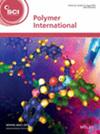Biocompatible hydrogels comprised of collagen, chitosan and polyurethane with potential applications for wound healing and controlled drug release
Martín Caldera-Villalobos, Daniela G Ramos-Montañez, Denis A Cabrera-Munguía, Juan J Becerra-Rodriguez, Nayeli Rodríguez-Fuentes, Jesús A Claudio-Rizo
求助PDF
{"title":"Biocompatible hydrogels comprised of collagen, chitosan and polyurethane with potential applications for wound healing and controlled drug release","authors":"Martín Caldera-Villalobos, Daniela G Ramos-Montañez, Denis A Cabrera-Munguía, Juan J Becerra-Rodriguez, Nayeli Rodríguez-Fuentes, Jesús A Claudio-Rizo","doi":"10.1002/pi.6590","DOIUrl":null,"url":null,"abstract":"<p>Chitosan and collagen are two valuable biopolymers for the synthesis and design of biomaterials. In this work, we evaluate the effect of the concentration of chitosan on the physicochemical and biological properties of polyurethane-crosslinked collagen hydrogels. Chitosan was added with a proportion ranging from 0 to 40 wt%. Depending on the aminoglycoside content, semi-interpenetrating polymeric networks (semi-IPNs) or completely IPNs were generated; this is attributed to the occlusion of the chitosan granules in the reticulated fibrillar matrix. The presence of chitosan in these hydrogels provides antibacterial capacity against pathogenic microorganisms such as <i>Escherichia coli</i>, which is corroborated by inhibition halo experiments. Hydrogels with 40 wt% of chitosan only showed improvement in the gelation time and mechanical performance, indicating a dependent relation of these properties with respect to the aminopolysaccharide content. Hydrogels with 10 wt% of chitosan showed the best biomedical performance. They also have the highest reticulation, swelling capability and chemical stability against degradation events such as hydrolysis and proteolysis. Further, they have the best biocompatibility for human monocytes, and they stimulate the secretion of monocyte chemotactic protein-1 and tumor necrosis factor-alpha. Also, these hydrogels showed a controlled release of ketorolac at pH 7 and 37 °C. The results of these <i>in vitro</i> biological tests demonstrate the potential application of novel biopolymer-based hydrogels in chronic wound healing due to their antibacterial capacity and modulation of the biological response of specialized cells in dermal repair treatments, as well as for the design of smart materials for the controlled release of drugs. © 2023 Society of Industrial Chemistry.</p>","PeriodicalId":20404,"journal":{"name":"Polymer International","volume":"74 1","pages":"9-19"},"PeriodicalIF":2.9000,"publicationDate":"2023-11-07","publicationTypes":"Journal Article","fieldsOfStudy":null,"isOpenAccess":false,"openAccessPdf":"","citationCount":"0","resultStr":null,"platform":"Semanticscholar","paperid":null,"PeriodicalName":"Polymer International","FirstCategoryId":"92","ListUrlMain":"https://onlinelibrary.wiley.com/doi/10.1002/pi.6590","RegionNum":4,"RegionCategory":"化学","ArticlePicture":[],"TitleCN":null,"AbstractTextCN":null,"PMCID":null,"EPubDate":"","PubModel":"","JCR":"Q2","JCRName":"POLYMER SCIENCE","Score":null,"Total":0}
引用次数: 0
引用
批量引用
Abstract
Chitosan and collagen are two valuable biopolymers for the synthesis and design of biomaterials. In this work, we evaluate the effect of the concentration of chitosan on the physicochemical and biological properties of polyurethane-crosslinked collagen hydrogels. Chitosan was added with a proportion ranging from 0 to 40 wt%. Depending on the aminoglycoside content, semi-interpenetrating polymeric networks (semi-IPNs) or completely IPNs were generated; this is attributed to the occlusion of the chitosan granules in the reticulated fibrillar matrix. The presence of chitosan in these hydrogels provides antibacterial capacity against pathogenic microorganisms such as Escherichia coli , which is corroborated by inhibition halo experiments. Hydrogels with 40 wt% of chitosan only showed improvement in the gelation time and mechanical performance, indicating a dependent relation of these properties with respect to the aminopolysaccharide content. Hydrogels with 10 wt% of chitosan showed the best biomedical performance. They also have the highest reticulation, swelling capability and chemical stability against degradation events such as hydrolysis and proteolysis. Further, they have the best biocompatibility for human monocytes, and they stimulate the secretion of monocyte chemotactic protein-1 and tumor necrosis factor-alpha. Also, these hydrogels showed a controlled release of ketorolac at pH 7 and 37 °C. The results of these in vitro biological tests demonstrate the potential application of novel biopolymer-based hydrogels in chronic wound healing due to their antibacterial capacity and modulation of the biological response of specialized cells in dermal repair treatments, as well as for the design of smart materials for the controlled release of drugs. © 2023 Society of Industrial Chemistry.
由胶原蛋白、壳聚糖和聚氨酯组成的生物相容性水凝胶在伤口愈合和药物释放控制方面具有潜在的应用前景
摘要壳聚糖和胶原蛋白是两种有价值的生物高分子材料的合成和设计。本研究考察了壳聚糖浓度对聚氨酯交联胶原蛋白水凝胶理化和生物学性能的影响。壳聚糖的添加比例为0 ~ 40 wt.%。根据氨基糖苷含量的不同,可生成半互穿聚合物网络(semi - IPN)或完全互穿聚合物网络;这是由于壳聚糖颗粒在网状纤维基质中的闭塞。壳聚糖在这些水凝胶中的存在提供了对大肠杆菌(E. coli)等病原微生物的抗菌能力,抑制晕实验证实了这一点。壳聚糖含量为40 wt.%的水凝胶只改善了凝胶时间和力学性能,表明这些性能与氨基多糖含量有关。10%的水凝胶。壳聚糖的生物医学性能最好。它们还具有最高的网状、膨胀能力和抗水解和蛋白质水解等降解事件的化学稳定性。此外,它们对人类单核细胞具有最佳的生物相容性,并刺激单核细胞趋化蛋白- 1 (MCP - 1)和肿瘤坏死因子- α (TNF - α)的分泌。此外,这些水凝胶在pH 7和37°C下显示出酮酸的可控释放。这些体外生物试验的结果证明了新型生物聚合物水凝胶在慢性伤口愈合中的潜在应用,因为它们具有抗菌能力和调节皮肤修复治疗中特定细胞的生物反应,以及设计用于控制药物释放的智能材料。这篇文章受版权保护。版权所有。
本文章由计算机程序翻译,如有差异,请以英文原文为准。




